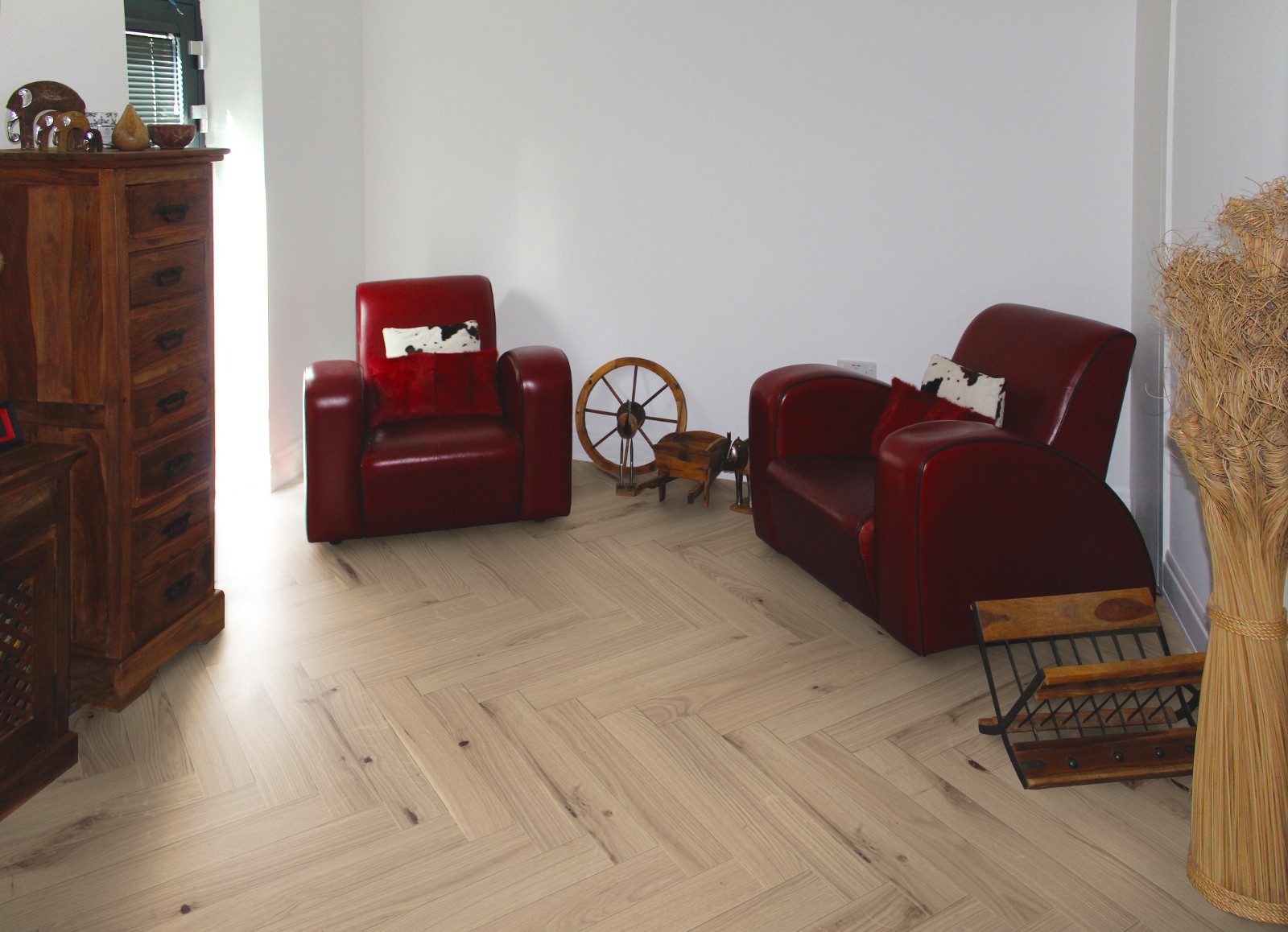
Engineered flooring consists of multiple layers of soft wood, which are glued together to form a plywood-like sandwich base. In order for the flooring to be stable, these layers run at 90° to one another – this makes them less prone to move, for instance because of high humidity levels, as compared to solid boards. These several layers of thin wood are topped by a layer of solid wood — which is called ‘veneer’. The solid wood layer ranges in thickness depending on the quality of the flooring, but usually it’s between 3-7mm (and can be up to 15mm).
Choosing the proper thickness of the engineered wood flooring is slightly more complicated than choosing the proper style and colour. Let’s get into detail on how to make a decision concerning the right thickness of engineered wood floor.
You may think that the difference between the thickest and the thinnest engineered wood flooring boards is so insignificant that it’s not worth paying attention to it in any respect and that it won’t really make any big difference. But, you couldn’t be more wrong. It’s quite an important factor – read on to learn why.
When making a decision concerning the proper thickness of engineered wood flooring, you need to consider several things. Those include:
Will your flooring be installed over under floor heating?
Usually, it’s recommended that engineered wood flooring installed over under floor heating (UFH) should be no thicker than 15mm. All that, because boards of this thickness let the heat pass into the room more efficiently as compared to thicker boards.
Will your flooring be fixed directly to the joists?
If your engineered wood flooring is to be fitted directly onto joists or battens, experts recommend that the boards should have a minimum thickness of 18mm. Moreover, if you’re fitting engineered wood flooring to joists consider taking a few other precautions, for instance do always ensure that the centre points of the joists are at least 450mm from one another. If the distance is larger, you will need to use noggins or braces, which will guarantee stability.
Will the new flooring be fitted to replace old flooring?
It’s often the case that the thickness of your old floor is the basis for determining the thickness of the new flooring. If you’ve decided your new floor will be of the same thickness as the old one, you won’t need to change skirting board or door heights. And this will reduce both the total cost of the flooring project as well as all the fuss.
How high will traffic on your flooring be?
And last but not least, remember that when fitting a floor in an interior where the traffic is supposed to be heavy, make sure you choose sufficient thickness of the board, which will enable you to sand and refinish the flooring in the future, if need be.
| Mon-Fri | 8:00AM – 5:00PM |
| Saturday | 10:00AM – 4:00PM |
| Sunday | 11:00AM – 3:00PM |





.svg)
.svg)